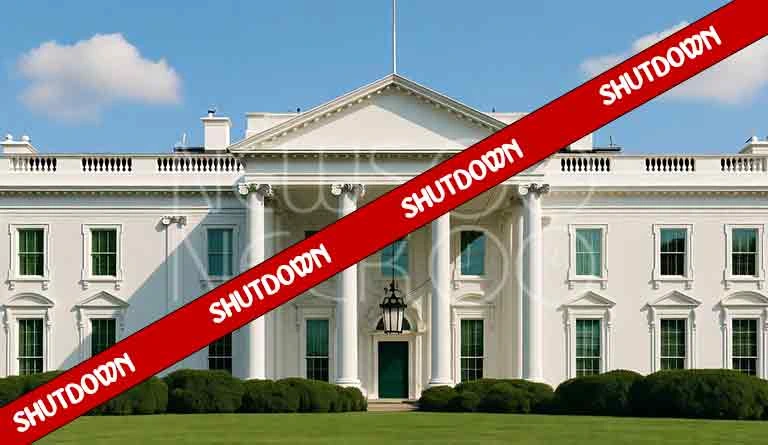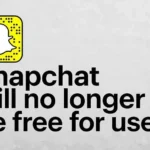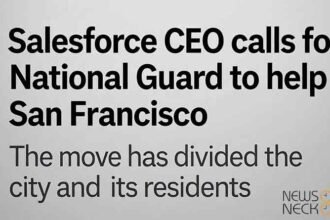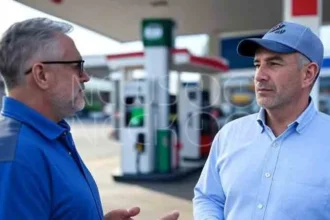Paycheck Panic and Travel Chaos: Shutdown Stalemate Grips America
WASHINGTON — The familiar rhythms of American government have ground to a halt, replaced by a deepening stalemate that is now echoing from the halls of Congress to the control towers of the nation’s busiest airports. As the federal shutdown enters its second week, a dispute over the most basic of promises, whether hundreds of thousands of idle workers will ever be paid for their forced time off, has shattered norms and injected a new level of anxiety into a divided capital.
The crisis took a deeply personal turn for the nation’s 750,000 furloughed employees when President Trump suggested this week that whether they receive back pay “depends on who we’re talking about” . The comments, which implied some workers “don’t deserve to be taken care of,” came as the White House quietly drafted a legal opinion arguing that a 2019 law guaranteeing back pay for furloughed workers may not apply to this shutdown .
The move was immediately challenged by lawmakers from both parties. “The law is the law,” said Senator Chris Van Hollen, a Maryland Democrat who helped write the 2019 bill . “There is nothing this administration can do to change that.” His sentiment was echoed by Republican leaders, with Senator John Thune of South Dakota stating his “assumption is that furloughed workers will get back pay” .
The Human Toll of the Impasse
For federal workers, the political rhetoric has translated into sleepless nights and mounting fear. The White House’s new interpretation of the law, if enacted, would mark a radical departure from past shutdowns, where Congress has ultimately ensured all employees were paid retroactively .
The uncertainty is a “strategic mistake,” said Republican Senator Thom Tillis of North Carolina. “I would start looking for another job if I’m a furloughed worker,” he told reporters, warning that the threat of lost pay could permanently drive away essential talent .
The standoff in Washington is rooted in a political fight over health care. Democrats are refusing to support a stopgap funding bill without an extension for expiring Affordable Care Act subsidies, which help millions of Americans afford health insurance. Republicans have insisted that the government must reopen before any negotiations on health care can begin .
“We really need more of a commitment than that,” said Democratic Senator Tim Kaine of Virginia, expressing a deep-seated distrust that the White House would honor any deal struck after the government reopens .
You Might Like it: U.S. Tariffs and H-1B Visa Fee
Chaos in the Skies
As politicians dig in, the consequences of the shutdown are rippling outward, most visibly at the nation’s airports. A system already stretched thin is now showing alarming signs of strain.
The Federal Aviation Administration has reported a “slight increase” in air traffic controllers calling in sick, according to Transportation Secretary Sean Duffy . While their union has forcefully discouraged any coordinated action, citing legal prohibitions, even a small number of absences can cause major disruptions in a critically understaffed system .
This week, those disruptions became stark reality. Key air traffic control facilities have been forced to reduce operations or close entirely due to short staffing. The following table outlines some of the major impacts on travel:
| Airport/Facility | Impact | Cause |
|---|---|---|
| Nashville International Airport | Approach facility closed for 5 hours; 2+ hour average delays | Staffing shortage |
| Chicago O’Hare International Airport | Tower short-staffed for 9 hours; 41-minute average delays | Staffing shortage |
| Hollywood Burbank Airport (CA) | Entire control tower closed for several hours | Staffing shortage |
| Multiple Major Facilities | Staffing shortages reported in Boston, Atlanta, Philadelphia, Dallas, Houston, Newark, Las Vegas | Staffing shortage |
At Hollywood Burbank Airport on Monday, the situation became so dire that the control tower shut down entirely for several hours. Without controllers to guide them, pilots were left to coordinate their own takeoffs and landings using a common radio frequency, a practice typically reserved for small, rural airstrips .
“It’s doable but it adds a margin of danger,” said Mary Schiavo, a CNN transportation analyst and former DOT inspector general. “It’s not as safe as having full air traffic control” .
You might like it: Two Foundational Weapons Powering the United States
A System on the Brink
The travel chaos underscores a broader fragility. Air traffic controllers, who are deemed “essential” employees, are required to work without pay during the shutdown. Their next scheduled payday is October 14, a check they will not receive if the government remains closed .
“They’re concerned now if they don’t get their paychecks, how do I pay my mortgage? How do I pay my car payment?” Secretary Duffy said, acknowledging the immense pressure on his workforce .
The National Air Traffic Controllers Association (NATCA) has emphasized that its members are committed to safety, but the union has also been vocal about the pre-existing staffing crisis that this shutdown has now exacerbated .
With no votes on government funding bills scheduled in the Senate for Tuesday, the shutdown is guaranteed to extend into its eighth day, and the political gulf appears as wide as ever . For the hundreds of thousands of federal workers staring at an uncertain financial future and the millions of travelers facing chaos in the skies, the political stalemate in Washington is no longer an abstract debate. It is a crisis that is hitting, quite literally, close to home.
Author: Junaid Arif
Date: 8 Oct, 2025
For More Updates, Visit Newsneck













